Monuments in Greece offer insight into its historical evolution, especially across Athens, Olympia, and Delphi. These structures, like sanctuaries, theatres, and civic buildings, help visitors understand how classical Greek society functioned. Beyond aesthetics, these monuments reflect governance, beliefs, and public life. Built between the 5th and 2nd centuries BCE, many sites are internationally protected and maintained through conservation projects. Recognised by UNESCO, they continue to attract academic study and interest from travellers who appreciate classical heritage.
Top 10 Monuments In Greece To Visit
This is the list of 10 most iconic monuments in Greece that provide insight into ancient architecture, culture, and civic structure.
1. Parthenon
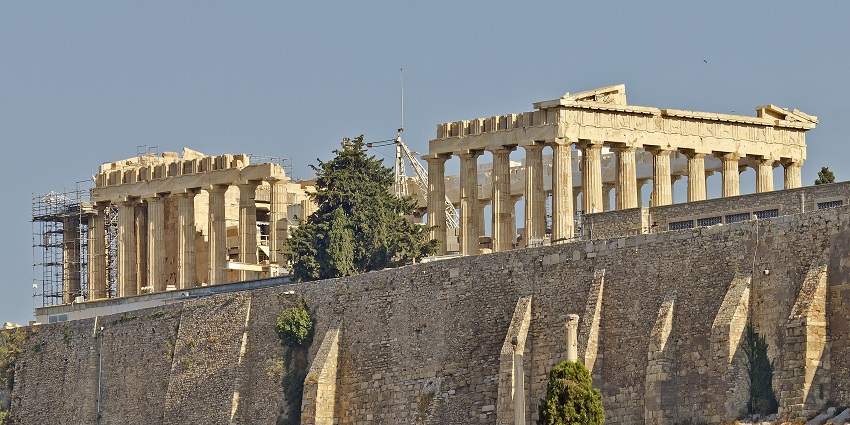
Photo: A.Savin / Wikimedia Commons
The Parthenon is among the most important Monuments in Greece, symbolising ancient Athens’ dedication to Athena. Its classical Doric design and sculptural details reflect the architectural precision of the 5th century BCE. Originally serving as a treasury and later religious sites under different empires, it held a colossal statue of Athena crafted by Phidias. Visitors today explore its preserved columns and admire the adjoining Acropolis Museum. From a historical perspective, it is the central piece in understanding ancient urban planning, religion, and civic identity.
Major Attractions: Ancient architecture, the Acropolis Museum nearby
Timings: 8 AM – 8 PM
Entry Fee: €20 / ₹1940
2. Temple Of Poseidon At Sounion
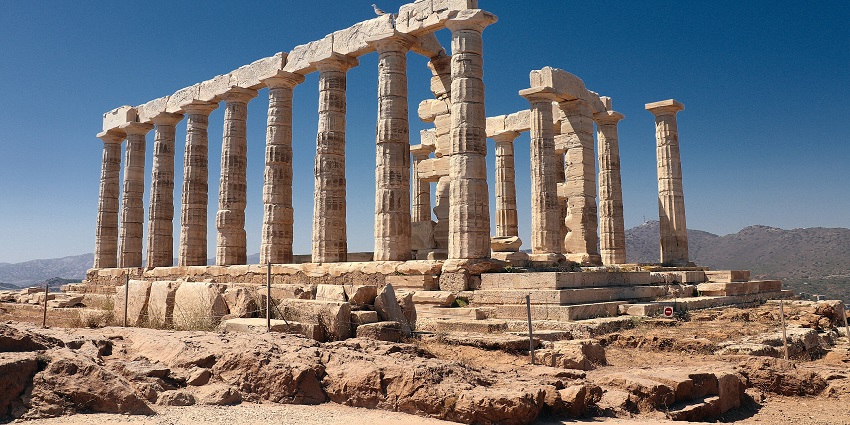
Photo: George E. Koronaios / Wikimedia Commons
The Temple of Poseidon at Cape Sounion provides insight into ancient maritime beliefs and construction methods. Set atop a cliff, the partially standing marble columns offered aesthetic and spiritual value to Greek sailors. The location also held strategic importance for observing naval movement. From a literary perspective, Lord Byron’s visit and engraving tie this structure to the modern poetic legacy. Visitors often find interest in its archaeological remnants and sea-facing design, which provide a glimpse into Greece’s coastal defence and religious observance in ancient times.
Major Attractions: Sunset view, sea-facing ruins
Timings: 9 AM – 7.30 PM
Entry Fee: €10 / ₹970
3. Ancient Agora Of Athens
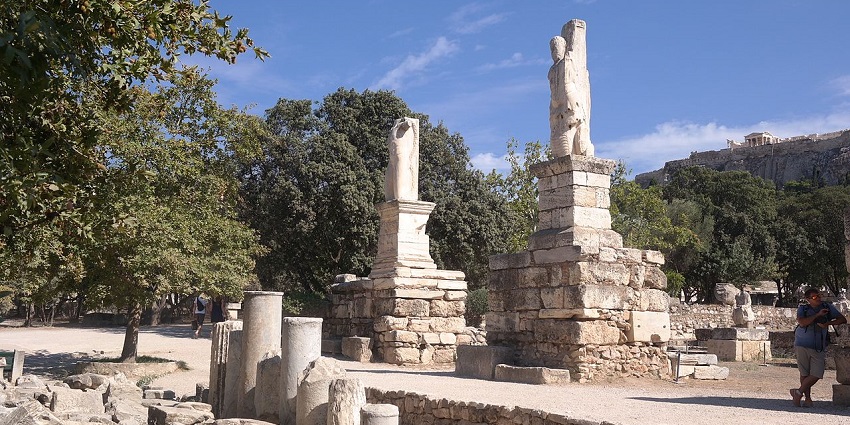
Photo: Mirjanamimi / Wikimedia Commons
The Ancient Agora of Athens is a foundation for civic development, where decisions shaped early democratic systems. As a meeting point for philosophers, orators, and merchants, it blended intellectual and practical functions. Structures like the Stoa of Attalos now house ancient tools, inscriptions, and coins, giving modern viewers a look at administrative functions. From a political viewpoint, it was where voices like Socrates challenged norms and encouraged dialogue, reinforcing its role in shaping public discourse and the functioning of early governance.
Major Attractions: Stoa of Attalos, Museum of the Ancient Agora
Timings: 8 AM – 5 PM
Entry Fee: €10 / ₹970
4. Temple Of Zeus At Olympia
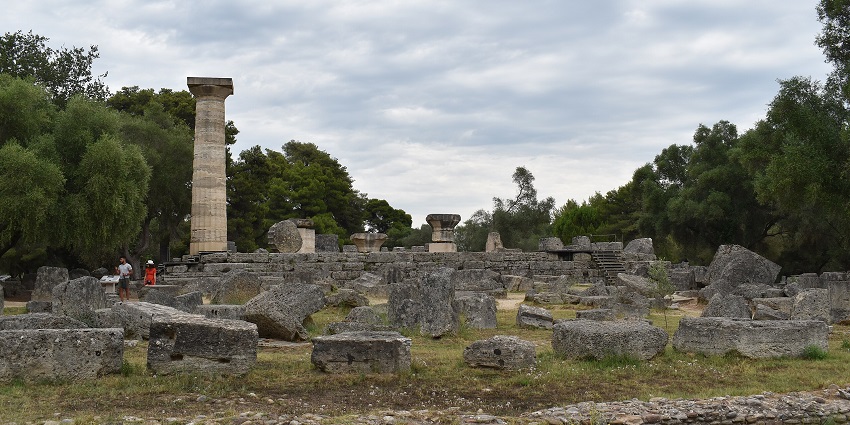
Photo: Annatsach / Wikimedia Commons
This iconic temple, counted among the national Monuments in Greece, reflects religious reverence and architectural ambition. It honoured Zeus and once contained a grand chryselephantine statue regarded as one of the Seven Wonders. From a sporting heritage perspective, Olympia served as the original site of the Olympic Games, drawing crowds for contests held in Zeus’s name. Though the temple now stands in ruins, the spatial layout and nearby stadium illustrate how faith and physical strength were deeply linked in ancient Greek tradition.
Major Attractions: Olympia Museum, Ancient Stadium
Timings: 8 AM – 8 PM
Entry Fee: €12 / ₹1160
5. Lion Gate At Mycenae
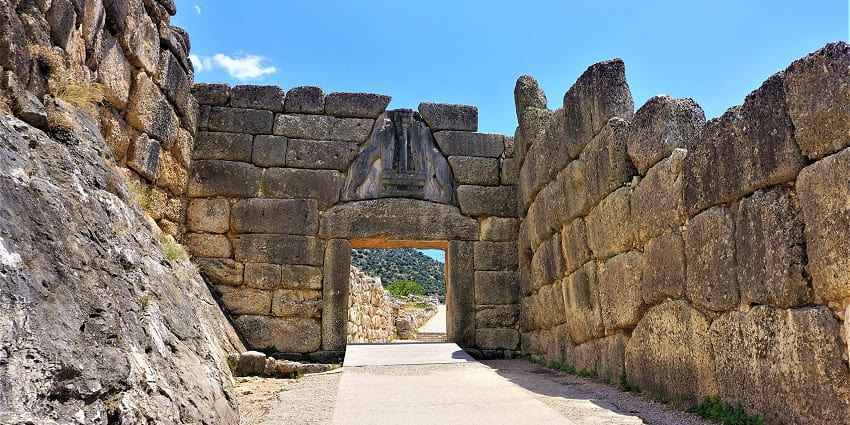
Photo: Joyofmuseums / Wikimedia Commons
The Lion Gate at Mycenae is a striking piece of prehistoric engineering, reflecting the Mycenaean civilisation’s architectural foresight. It is one of the historic monuments in Greece. Its relief carving of lionesses above the entryway signified strength and authority. From a military standpoint, this gate served as the stronghold’s primary defence, controlling access to the inner palace. The use of massive limestone blocks, known as Cyclopean masonry, remains a subject of engineering interest. Archaeological findings around the gate, such as royal tombs, add depth to understanding elite life and funerary practices.
Major Attractions: Citadel ruins, Royal tombs
Timings: 8 AM – 6.30 PM
Entry Fee: €12 / ₹1160
6. Temple Of Olympian Zeus
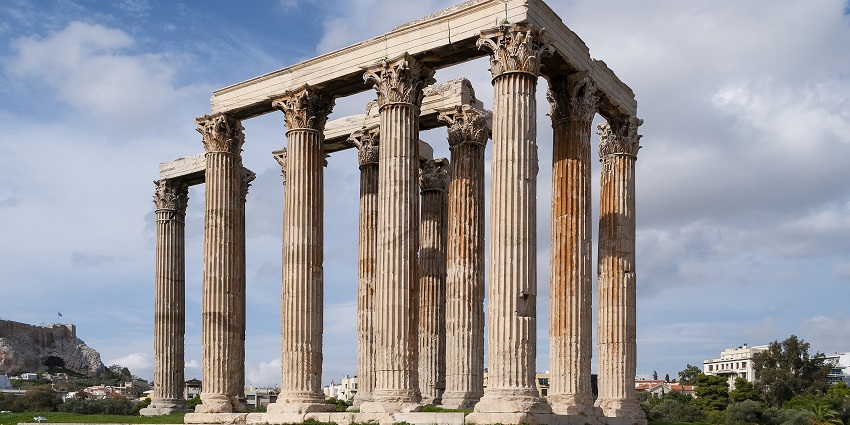
Photo: Ava Βabili / Wikimedia Commons
The Temple of Olympian Zeus was one of Greece’s grandest structures, completed centuries after its foundation. Although only a few Corinthian columns remain, the site speaks volumes about evolving religious architecture. From an engineering perspective, the scale and materials reflect high ambition and craftsmanship spanning the Greek and Roman eras. The temple’s final form under Hadrian suggests Roman influence on local traditions. Its location near central Athens draws interest from those studying city expansion and how monumental religious spaces interacted with urban infrastructure.
Major Attractions: Hadrian’s Arch is nearby
Timings: 8 AM – 5 PM
Entry Fee: €6 / ₹580
7. Rotunda Of Galerius
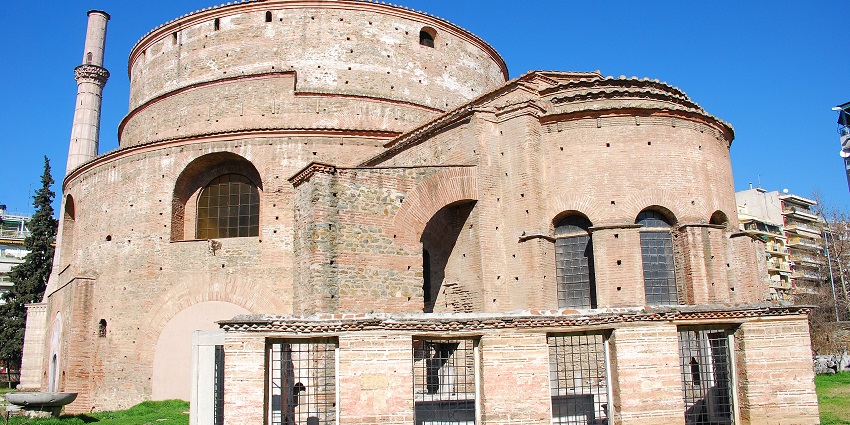
Photo: George M. Groutas / Wikimedia Commons
The Rotunda of Galerius highlights architectural adaptation through changing historical periods. Initially built for imperial use, it later functioned as a Christian church and then as a mosque, revealing how sacred sites were repurposed over time. The structure’s cylindrical shape and dome offer insights into Roman architectural trends that predate Byzantine influence. Its detailed mosaics serve as key references for early Christian iconography. Viewed from a religious transformation angle, the Rotunda exemplifies how monuments can reflect the fluid identity of urban spiritual spaces.
Major Attractions: Interior mosaics, Adjacent Roman ruins
Timings: 8 AM – 8 PM
Entry Fee: €6 / ₹580
8. Temple Of Hephaestus
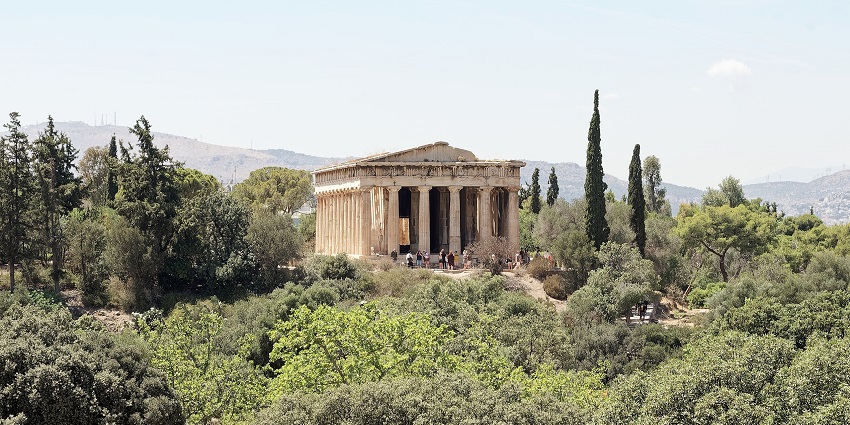
Photo: Efrem Efre / Wikimedia Commons
This remarkably preserved temple offers scholars and visitors a reference for understanding Doric design. Situated near the Ancient Agora, its proximity suggests protection over local craftsmen, aligning with Hephaestus’s domain over metalwork. From a societal structure viewpoint, the temple’s construction reflects the respect afforded to skilled tradespeople in ancient Athens. The temple retained much of its original detail, from friezes to column integrity, making it essential for architectural study. Its use as a church further illustrates how Greek religious spaces evolved across centuries.
Major Attractions: Full Doric structure, Garden surroundings
Timings: 8 AM – 5 PM
Entry Fee: €10 / ₹970
9. Panathenaic Stadium
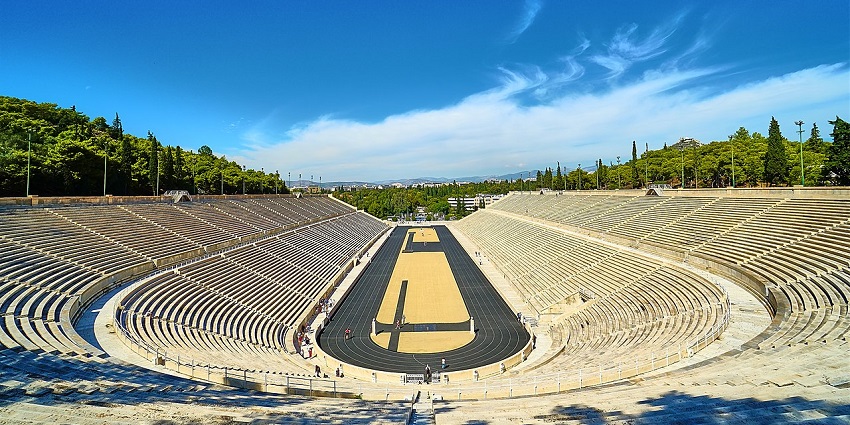
Photo: George E. Koronaios / Wikimedia Commons
The Panathenaic Stadium serves as a historic link between ancient Greek sports and the Olympic revival in 1896. Built with white marble, it once accommodated large audiences for athletic events. From a cultural continuity viewpoint, this stadium has transitioned from ancient Greek games to hosting modern ceremonies. Its role in Olympic torch relays and national parades keeps it relevant today. Visitors often come to understand how athletic excellence and civic pride intersect across generations, reflected in the structure’s ongoing ceremonial use.
Major Attractions: Olympic displays, Marathon history exhibits
Timings: 8 AM – 7 PM
Entry Fee: €5 / ₹480
10. Odeon Of Herodes Atticus
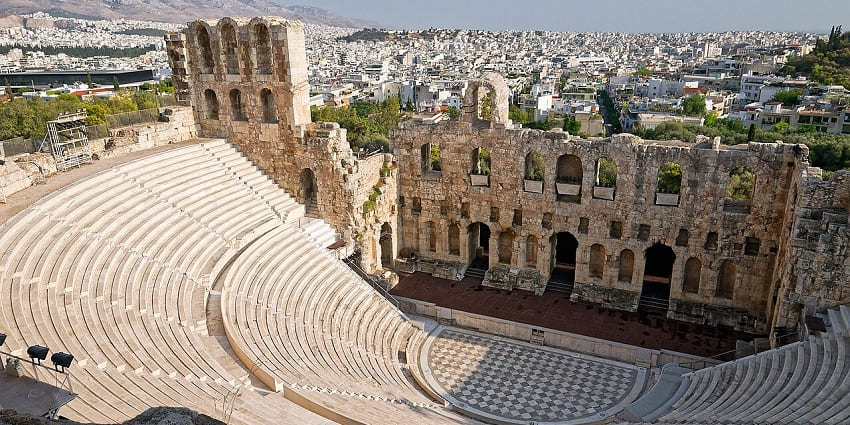
Photo: Laurens R. Krol / Wikimedia Commons
The Odeon of Herodes Atticus merges classical design with continuous cultural utility. Originally a theatre for musical performances, it was restored for modern use in the 20th century. From a performance history perspective, it stands out as a venue for ancient dramas and contemporary concerts. Its integration into the Athens Festival celebrates continuity in public expression through the arts. With seating for thousands and excellent acoustics, it remains a functioning venue where audiences experience music and performance across centuries.
Major Attractions: Summer concerts, Ancient theatre experience
Timings: Event-based access
Entry Fee: Varies by event
Monuments in Greece represent centuries of cultural, religious, and civic development shaped by philosophical thought and artistic skill. From marble temples to ancient theatres, they reveal a commitment to public life, storytelling, and innovation. Explore the diverse packages offered by TripXL to experience and explore the architectural heritage and intellectual legacy reflected in these enduring monuments spread across the country.
Cover Photo: Jebulon / Wikimedia Commons


 WhatsApp
WhatsApp
 Twitter
Twitter









